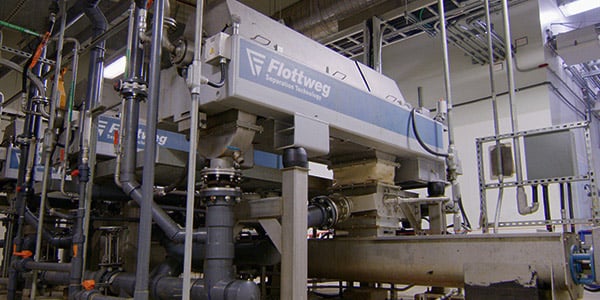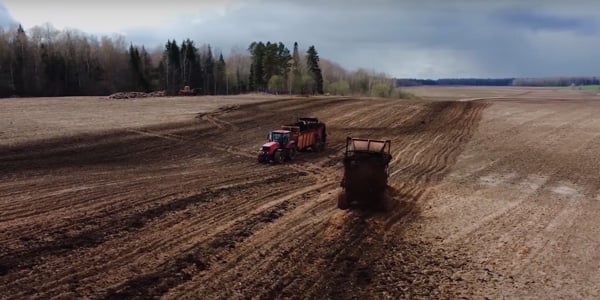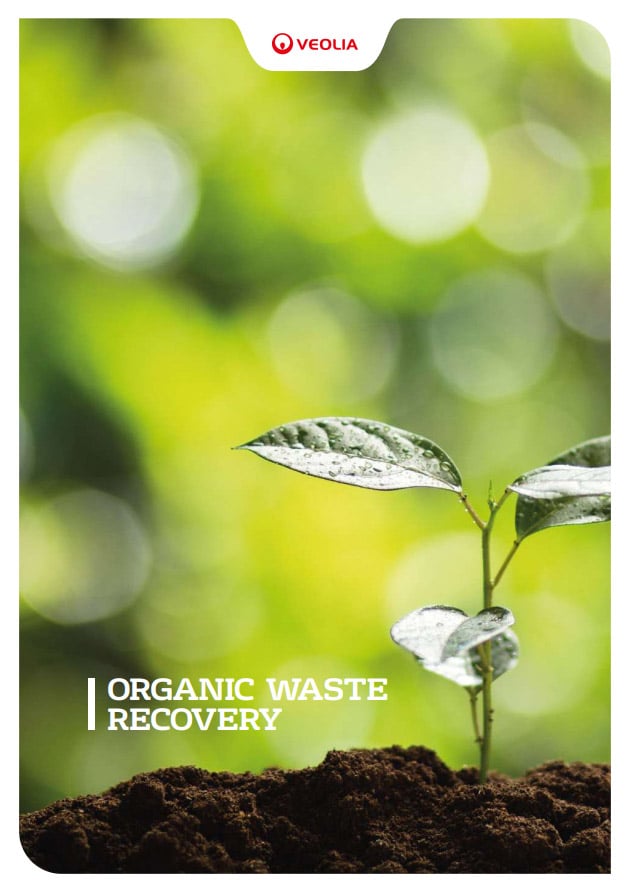Every October, Canada celebrates efforts to create a more sustainable future with both Waste Reduction Week (October 16-22 in 2023) and Circular Economy Month, providing an opportune time to discuss how food waste can be leveraged to address not just environmental, but also economic and social issues.
Food waste: a mounting challenge for global carbon emissions
Food waste represents 30% of the municipal waste stream. And when disposed of in a landfill it becomes a significant source of methane — a potent greenhouse gas. Around the world, countries are faced with increasing concerns as food waste in landfills contributes to approximately eight percent of total carbon emissions, posing a challenge to government efforts to achieve ambitious climate goals. The global effort to promote decarbonization requires advanced technologies and a vision for keeping food waste out of landfills.
Anaerobic digestion: A sustainable solution for decarbonization
One solution that has proven to be effective in addressing the challenge of food waste is anaerobic digestion (AD). Anaerobic digestion is becoming an increasingly attractive option for municipalities and industries in Canada and around the world. It offers a way to divert and process food waste.
By implementing anaerobic digestion, food waste can be efficiently converted into renewable energy and biofertilizers, reducing its impact on the environment and helping Canada and other countries achieve its environmental goals. State-of-the-art facilities convert these materials into both renewable energy and valuable soil products for agricultural and other land based applications.
How anaerobic digestion works
Today’s AD facilities are large and complex operations. There are three predominant technologies currently being used in the processing of municipal and commercial organics — wet, dry and plug flow technologies. These technologies are primarily selected by the feedstocks they receive from municipal and/or commercial sources as well as the desired outputs from the process.

In Canada, municipalities are moving to source separated organics collection as the wet technology process generates better biogas production. It is important to note that AD facilities are entirely different from traditional waste materials handling and logistics as they are more complex, with a focus on biology and chemistry.
A critical component of an AD process is the pre-treatment of feedstocks. Municipal organic waste feedstock can have a high plastic content if the collection of food wastes is in plastic bags. The pre-treatment system removes the inert contaminants and other non-digestible elements. The remaining contaminant-free organic slurry is processed through an anaerobic digestion system where the organics are converted to biogas and digester solids.
Food waste organics can be put to many sustainable uses
Biogas can be used in many beneficial ways:
- It can be used to produce heat and electricity
- By removing the carbon dioxide, it can create a biomethane injected into the gas grid as a renewable natural gas to power homes, businesses and vehicles
Digestate, meanwhile, is a nutrient-rich substance containing nitrogen and phosphates that can be used to:
- Condition soil
- Serve as a fertilizer for agriculture purposes

Advanced operators can also co-digest municipal source-separated organics with biosolids at wastewater treatment facilities for communities seeking to leverage their existing AD infrastructure.
In addition to stand-alone AD facilities, organic food wastes can also be processed at wastewater treatment facilities. As many wastewater treatment facilities already have anaerobic digesters, there is the potential to add more organics at underutilized facilities. This option is particularly attractive to communities seeking to leverage existing municipal infrastructure as well as an option for neighboring communities to send their organic wastes for processing.
The use of on-farm digesters is another option for processing municipal and commercial organic wastes; however, at much lower volumes given regulatory constraints.
Investing in AD
With an increasing demand for sustainability and resource efficiency, municipalities and businesses are investing in comprehensive processing programs to extract maximum value from organic waste. The aim is to produce agriculturally beneficial byproducts, offset operational costs, and generate renewable energy from biogas, all part of a growing circular economy.
These programs involve complex planning and require extensive knowledge of:
- The processing of municipal and commercial food and yard wastes
- Wastewater treatment
- Sludge concentration processes
- Thermal processes
- Product marketing and distribution
- Land application
- Energy recovery
How AD is paving the way for decarbonization
Anaerobic digestion is a sustainable solution to the food waste crisis and supports decarbonization efforts. By investing in AD, municipalities and businesses can contribute to a circular economy and a more sustainable future. By embracing a holistic approach, we can both mitigate the environmental impact of food waste and create valuable resources for a more prosperous and resilient society.


